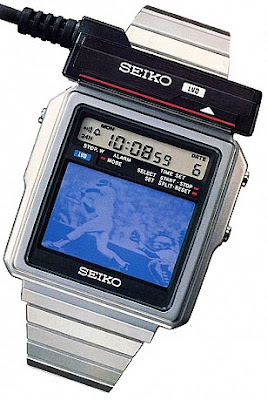By Bruce Shawkey
Most people think of Seiko as a modern watch. You'd be surprised to learn they go all the way back to 1881.
In 1881, Seiko founder Kintarō Hattori (left) opened a watch and jewelry shop called "K. Hattori" in Tokyo. Kintarō Hattori had been working as clockmaker apprentice since the age of 13, with multiple stints in different watch shops. Over the years, Hattori developed a close partnership with multiple foreign trading firms, including Favre-Brandt, F. Perregaux & Co., and others aallowing him to obtain exclusive imported timepieces and machinery, which was not available elsewhere at that time.Hattori's shop became increasingly popular due to the rarity of the imported watches the shop was selling, which couldn't be found anywhere else in Japan. The growing success allowed him to relocate the company to the main street of Ginza (Tokyo), still the epicenter of commerce in Japan to this day.

In order to avoid an ill omen believed to be associated with the word "GLORY" in Japanese, the Seikosha company changed its trade mark to "Seiko" in 1924.
1930 to 1990
Military watches produced for Japanese troops during World War II were manufactured by Seiko, which by 1938, produced 1.2 million timepieces a year. The scarcity of raw materials during the war diverted much of Seiko's production to on-board instruments for military aircraft and ships. Production was halted in 1941, due to WWII. A surviving example is shown at left. The watches fairly rare; some were brought to America as war trophies.Here's a rare, post-WWII watch from a 1951 issue of Europa Star magazine:
1951 was also the year Seiko broadcast its first radio commercial in Japan. In 1956, Seiko launched Japan's first automatic wristwatch, the Automatic (below, left).
The retail price at the time was 13,500 yen (about $94), more than three times the price of men's wristwatches, which were generally in the 4,000 yen range ($24). In 1958, Seiko developed the "Dia-Shock" anti-shock device. In 1959, Seiko launched the Gyro Marvel, which featured a revolutionary self-winding mechanism. In 1960, Seiko released the Grand Seiko, which claimed to be the most accurate wristwatch in the world.
Seiko quickly developed quartz technology in preparation for the 1964 Tokyo Olympics, and in 1963 launched the Seiko Crystal Chronometer. Seiko launched Japan's first chronograph wristwatch, the Crown Chronograph, in 1964, Japan's first world time wristwatch in the same year, and Japan's first diver's wristwatch in 1965. In 1967, Japan's first diver's watch with 300m water resistance was launched.
Seiko's first commercial quartz watch, the Astron (right), was launched in 1969. It cost the same as a medium-sized car.
Since the 1970s, Seiko has introduced a variety of wristwatches with various world firsts:
* in 1973, Seiko introduced the world's first wristwatch with a LCD display capable of displaying six digits for hours, minutes and seconds;
* in 1975, Seiko introduced the world's first digital watch with a stopwatch function;
* In 1978, Seiko introduced the world's first quartz diver's watch with a water resistance of 600 meters;
* In 1982, the world's first wristwatch with a television (below);
* In 1983, the world's first wristwatch with a record-and-play function and an analog quartz chronograph (left);
* In 1984, the world's first wristwatch computer below, right).
In 1986, Baselworld allowed non-European manufacturers to participate, and Seiko began exhibiting that year.
Here is a Seiko watch catalog from 1932
Check out those wristwatch designs. Direct copies of American designs by Hamilton and Elgin ... Coronado, etc.

























No comments:
Post a Comment